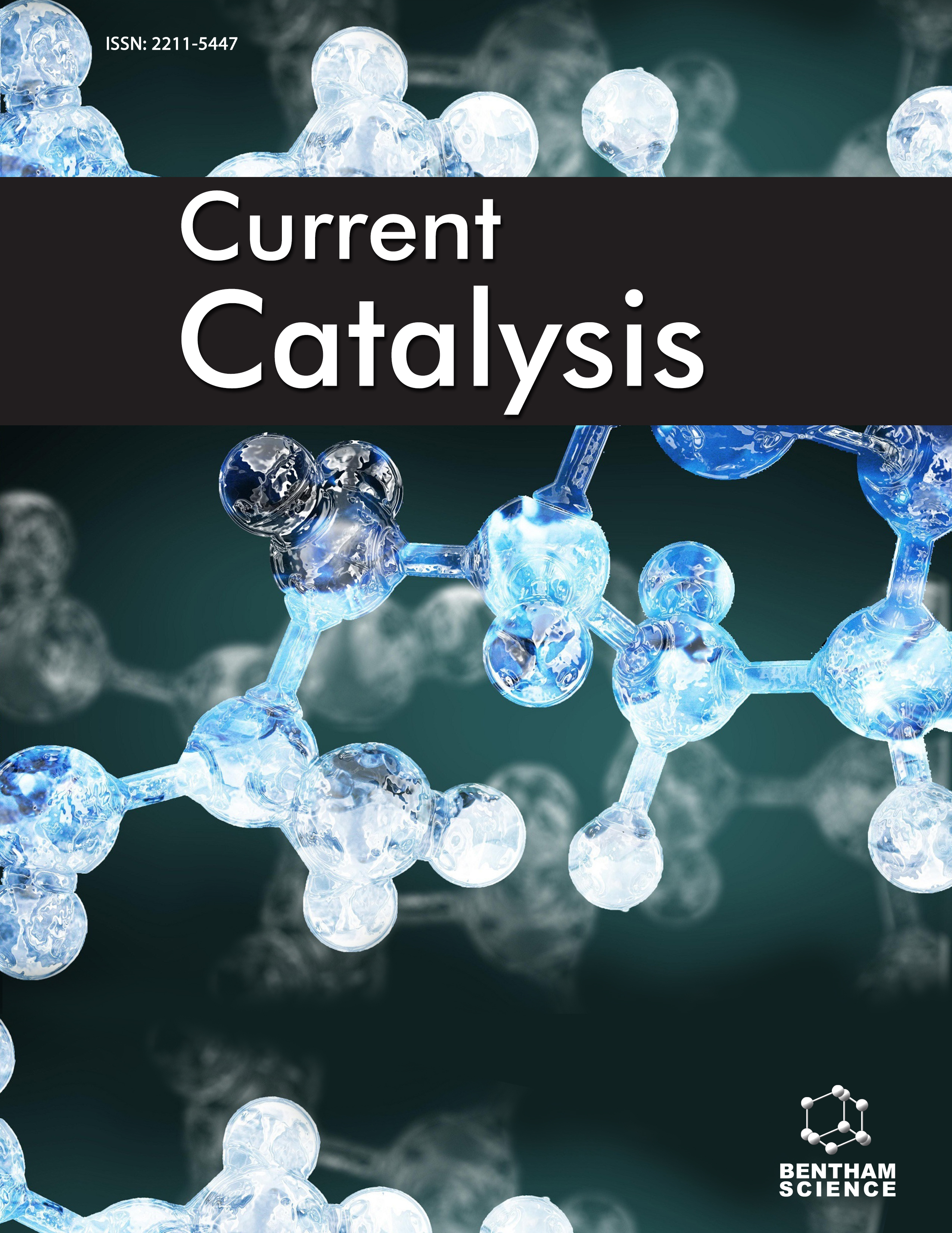- Home
- A-Z Publications
- Current Catalysis
- Previous Issues
- Volume 11, Issue 1, 2022
Current Catalysis - Volume 11, Issue 1, 2022
Volume 11, Issue 1, 2022
-
-
Progress in Catalytic Decarboxylative Oxidative C-H Alkynylation
More LessAlkyne carboxylic acid derivatives are stable, non-toxic, inexpensive, and commercially available. They are prevalent intermediates for various synthetic transformations. In recent years, decarboxylative oxidative alkynylation reactions involving direct C−H bond activation of diverse carbo- and hetero-cycles with alkyne carboxylic acid have attracted more and more interest from the synthetic community. The joy and challen Read More
-
-
-
Recent Advances in Palladium-catalyzed Borylation
More LessAuthors: Fall Lamine, C. M. A. Afsina, Rajan Archana and Gopinathan AnilkumarThe synthesis of organoboron compounds was accomplished using borylation catalyzed by palladium. This reaction is ubiquitous due to its widespread utility in coupling reactions and allied applications in synthesis. The attraction of borylation in organic synthesis has been attributed to moderate conditions associated with the reactions and tolerance to different types of functional groups. Their applications spread acros Read More
-
-
-
Recent Trends and Prospects in the Iron-catalyzed Amination Reactions
More LessAuthors: Richard Bartholomew, Thaipparambil Aneeja and Gopinathan AnilkumarIron-catalyzed C–H amination reactions have emerged as a potent tool in synthetic organic chemistry in recent years. These reactions are eco-friendly, highly catalytic efficient, and show good functional group tolerance. The organonitrogen products of the reaction have found wide applications in agricultural chemistry, medicinal chemistry, industrial chemistry, and natural product synthesis. This review focuses on th Read More
-
-
-
Alumina Supported Nickel-iron-ruthenium based Catalyst for Dry Reforming of Methane
More LessAuthors: Nawal Alhajri and Mohammed AlbualiIntroduction: Alumina-supported nickel-iron-ruthenium-based catalyst with a high surface area (200 m2 g-1) was synthesized via an impregnation method and tested for dry reforming of methane. Methods: The prepared catalyst was characterized by different analytical techniques, such as Xray diffraction, X-ray fluorescence, N2 sorption, environmental scanning electron microscopy, and X-ray photoelectron spectroscopy (X Read More
-
-
-
Deep Eutectic Solvent (DES) Mediated Multicomponent Synthesis of 4- thiazolidinone-5-carboxylic Acid: A Green Chemistry Approach
More LessAuthors: Majid Shaikh, Mujahed Shaikh, Devendra Wagare, Anis Ahmed Sheikh and Sayyad Sultan KasimBackground: The 4-thiazolidinone-5-carboxylic acid and its derivatives have diverse applications in agriculture, industrial and pharmaceutical fields. Therefore, the synthesis of this heterocyclic compound attracted much attention from researchers with green chemistry protocols. In this research work, we have introduced the green protocol for the synthesis of 4-thiazolidinone- 5-carboxylic acid by keeping the parameters in mind l Read More
-
-
-
Wet Air Oxidation of Phenol on Oxides of Fe(III), Mn(IV), Ti(IV) and Goethite
More LessAuthors: Gitali Baruah, Linton Hazarika, Kishor K. Shah and Krishna G. BhattacharyyaBackground: Phenol and its derivatives exist in water bodies due to the discharge of polluted wastewater from industrial, agricultural, and domestic activities into water bodies. Various industries like pharmaceutical, petrochemical and coal processing industries discharge phenolic compounds into water bodies. Phenol and substituted phenols are quite toxic to humans. Objective: Oxidative destruction of phenol in water was carried Read More
-
-
-
A Solvent-free/Effective Base Unsaturated Esters Synthesis using Novel Amine Functionalized Ionic Liquid
More Less1-(2-aminoethyl)-3-methylimidazolium bromide [Aemim]Br ionic liquid acted as a catalyst as well as a solvent in the Knoevenagel condensation reaction. The extent of products formed with high yield and more flattering for the synthesis of aliphatic and aromatic esters. The [Aemim] Br can be recycled for 6 runs without great loss of activity. Background: The Knoevenagel condensation was one of the fundamental reactions i Read More
-
Most Read This Month
Article
content/journals/ccat
Journal
10
5
false
en


